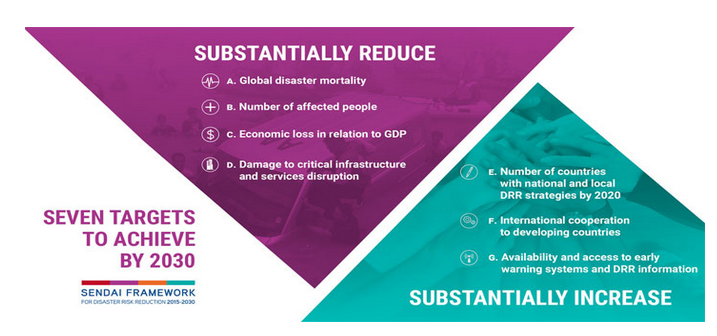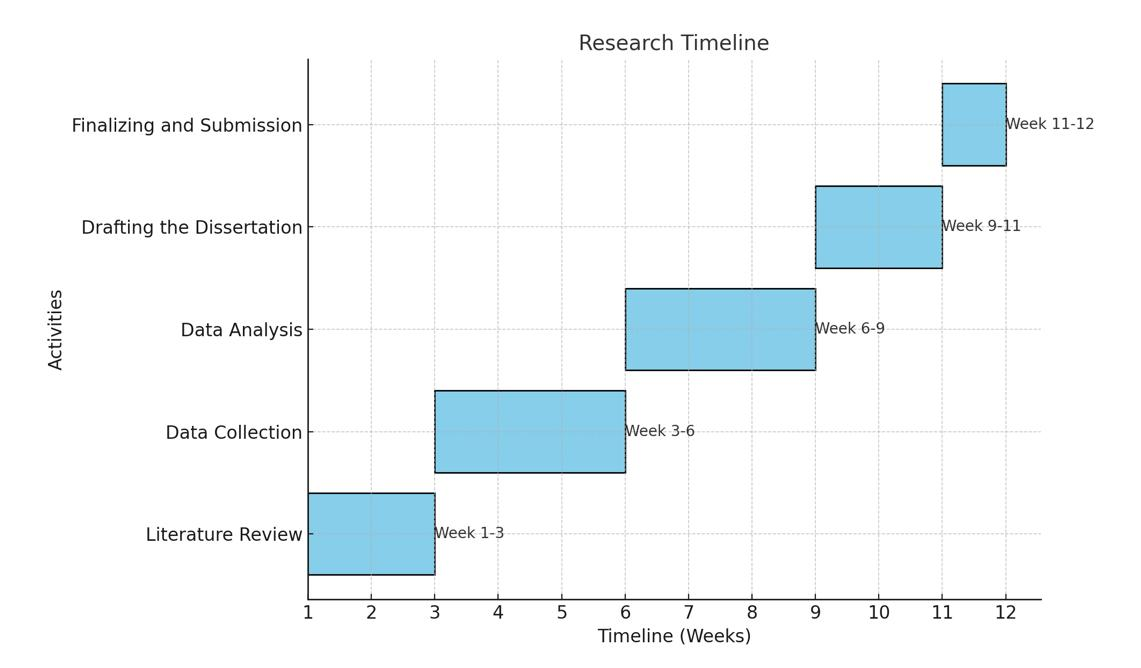Industry 4.0 and Natural Disaster Management: Leveraging Smart Technologies for Resilient Responses INDM430
- Subject Code :
INDM430
Research Proposal
"Industry 4.0 and Natural Disaster Management: Leveraging Smart Technologies for Resilient Responses"
Student Name
Student ID
Abstract
This research study will investigate the use of Industry 4.0 elements like Internet of Things (IoT), Artificial Intelligence (AI), and Big Data to improve natural disaster response capabilities. It will be examined that how these technologies make preparedness better and support disaster response while helping communities in recovery processes. The research will analyse secondary data by using thematic analysis with the help of academic work, case studies, and international non-governmental organizations reports. This study will evaluate important disaster risk concerns to develop specific technology recommendations that will improve the use of Industry 4.0 systems in disaster management plans for better protection against natural disasters.
Introduction and Background
Natural disasters such as earthquakes, floods and hurricanes create major problems for communities by causing extensive destruction across large areas. Conventional disaster management systems lack effective tools for tracking events while planning and distributing resources. Industry 4.0 technologies with their IoT AI and Big Data capabilities can transform disaster management through real-time data-based solutions. These advanced tools need more and more research to understand their full potential in disaster response (Habibi Rad et al., 2021).
Problem Statement
New technology from Industry 4.0 has the potential to support disaster management but experts still need to understand how to use these tools effectively. The implementation of technology is hindered by problems such as data protection, physical readiness, and user skill development.
Research Aim
To examine the potential of Industry 4.0 technologies in improving natural disaster management practices.
Research Objectives
- To discover how IoT devices participate in the process of disaster monitoring and early warnings.
- To study the role of AI in predictive modelling and decision-making during disasters.
- To assess the impact of Big Data analytics in disaster preparedness and recovery.
- To find challenges and recommend solutions for integrating Industry 4.0 technologies into disaster management frameworks.
Research Questions
- How can Industry 4.0 technologies enhance natural disaster management?
- What are the primary challenges in integrating these technologies into existing disaster management practices?
- What are the social, economic, and environmental impacts of using Industry 4.0 technologies in disaster scenarios?
Literature Review
Industry 4.0 Technologies in Disaster Management
Industry 4.0 technologies can revolutionize disaster management by using smart systems to solve major problems. These technological solutions improve immediate awareness and risk assessment while building better frameworks for responding to disasters. IoT enables early warning systems by using sensors and devices to track environmental conditions in real-time. The systems track environmental data like water height, earthquake movements, and weather conditions to enable quick responses and lower disaster risks (Singh et al., 2023).Soebandrija (2023) explains how IoT systems can deliver timely warnings to protect human lives and reduce disaster impacts. AI and Machine Learning help forecast disasters and guide emergency response strategies. AI algorithms analyse big data to predict disasters and suggest emergency responses. AI systems help forecast flood paths and choose better evacuation routes to enhance disaster management. Alipour Sarvari et al. (2019) demonstrates how AI technology extracts valuable information from complicated datasets to streamline operations and enhance decision speed. Big Data Analytics combines data from different sources such as satellites, social media, and ground sensors to help teams to understand situations better. Decision-makers benefit from data analysis to better manage resource distribution and emergency response priorities. Talley (2019) describes that Big Data makes operations more effective and enables quick analysis and recovery support. Advanced Industry 4.0 technology systems transform disaster management by creating precise solutions that help efficiently and strengthen communities against natural disasters.
Gaps in Literature
Most research studies about Industry 4.0 focuses on examining specific technologies rather than analysing how these technologies work as a combined system for disaster response. Examining each technology individually fails to show how these systems produce better results when used collectively in disaster preparedness. Studies often neglect to address essential problems like data security risks, system development readiness, and user capacity building regarding new technologies. Researchers have not fully analysed the social effects and economic barriers that come with bringing new technologies to disaster zones. The research plans to fill knowledge gaps through detailed examination of ways to integrate all elements of Industry 4.0 technologies.
Theoretical Framework
The study follows the Sendai Framework by focusing on how technology and innovation can help create resilient communities after disasters. The global plan focuses on disaster awareness and better oversight while using advanced tools and systems to build resilience. This study examines ways to improve disaster management through Industry 4.0 technologies based on the Sendai Framework principles (Kelman, 2015).
Figure 1: Sendai Framework Indicators

(Source: Busayo et al., 2020)
Research Methodology
Research Design
This research project employs a qualitative design to evaluate how Industry 4.0 technologies assist in managing natural disaster responses. The published materials will be analysed to learn about major developments, problems and opportunities (Muzari et al., 2022).
Data Collection
- Sources: Peer-reviewed journal articles, case studies and international non-governmental reports.
- Selection Criteria: Relevance to Industry 4.0 and disaster management, publication within the last 10 years, and credibility of the source.
Data Analysis
- Thematic Analysis: Data will be examined to understand the recurring themes, patterns, and insights. Themes like technology adoption, ethical considerations, and operational challenges will be analysed (Braun & Clarke, 2023).
- Steps:
- Familiarization with data.
- Coding for significant concepts.
- Identifying and categorizing themes.
- Interpretation of findings.
Significance of the Study
This research will:
- Improve academic understanding of how Industry 4.0 technologies can be used in an integrated manner for disaster management.
- Provide practical insights for policymakers and disaster management practitioners.
- Support the Sendai Frameworks goals by emphasizing technological solutions for disaster risk reduction.
Expected Outcomes
- Identification of key Industry 4.0 technologies applicable to disaster management.
- Insights into challenges and solutions for their integration.
- Policy recommendations for using smart technologies in disaster management frameworks.
Research Limitations
Due to the use of previously collected data, the research scope may be constrained since current publications might not cover all important aspects. Research that uses qualitative methods effectively discovers meaningful patterns but cannot create dependable quantitative data. Because of the fast evolution of technology, Industry 4.0 s in this study might not comprehensively reflect current advancements. Findings might not be applicable universally because different regions have different systems for handling disasters and building infrastructure.
Ethical Considerations
This research study highlights the need for proper ethical handling of data and interpretations. The quality secondary data sources will be used and cited properly according to academic standards. Research will focus on protecting personal data while examining how IoT and Big Data help managing disasters. The study will evaluate ethical issues related to technology gaps between regions with limited resources and suggest ways to include everyone in technology advancement. The solutions will be created that benefit communities through equitable treatment of resources and practices following humanitarian guidelines (Arifin, 2018).
Research Timeline

(Source: Researchers Own Work)
References
Alipour Sarvari, P., Nozari, M., & Khadraoui, D. (2019). The Potential of Data Analytics in Disaster Management.Lecture Notes in Management and Industrial Engineering, 335348. https://doi.org/10.1007/978-3-030-03317-0_28
Arifin, S. R. M. (2018). Ethical Considerations in Qualitative Study.INTERNATIONAL JOURNAL of CARE SCHOLARS,1(2), 3033. https://doi.org/10.31436/ijcs.v1i2.82
Braun, V., & Clarke, V. (2023). Thematic Analysis.Springer EBooks, 71877193. https://doi.org/10.1007/978-3-031-17299-1_3470
Busayo, E. T., Kalumba, A. M., Afuye, G. A., Ekundayo, O. Y., & Orimoloye, I. R. (2020). Assessment of the Sendai framework for disaster risk reduction studies since 2015.International Journal of Disaster Risk Reduction,50, 101906. https://doi.org/10.1016/j.ijdrr.2020.101906
Habibi Rad, M., Mojtahedi, M., & Ostwald, M. J. (2021). Industry 4.0, Disaster Risk Management and Infrastructure Resilience: A Systematic Review and Bibliometric Analysis.Buildings,11(9), 411. https://doi.org/10.3390/buildings11090411
- E. N. Soebandrija. (2023). Sustainable innovative disaster readiness technologies: 3D or 4D printing, IoT and big data in industry 4.0.AIP Conference Proceedings,2879, 020185020185. https://doi.org/10.1063/5.0126829
Kelman, I. (2015). Climate Change and the Sendai Framework for Disaster Risk Reduction.International Journal of Disaster Risk Science,6(2), 117127. https://doi.org/10.1007/s13753-015-0046-5
Muzari, T., Shava, G. N., & Shonhiwa, S. (2022).Qualitative research paradigm, a key research design for educational researchers, processes and procedures: A theoretical overview. https://indianapublications.com/articles/IJHSS_3(1)_14-20_61f38990115064.95135470.pdf
Singh, R. K., Srivastava, I., & Dubey, V. (2023). A Disaster Management System Powered by AI and Built for Industry 4.0.Advanced Technologies and Societal Change, 185205. https://doi.org/10.1007/978-981-99-1949-9_10
Talley, J. W. (2019). Disaster Management in the Digital Age.IBM Journal of Research and Development, 11. https://doi.org/10.1147/jrd.2019.2954412

